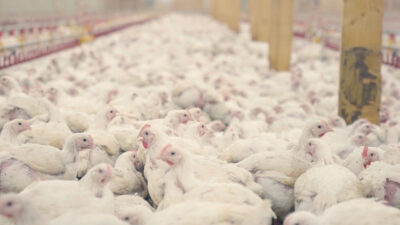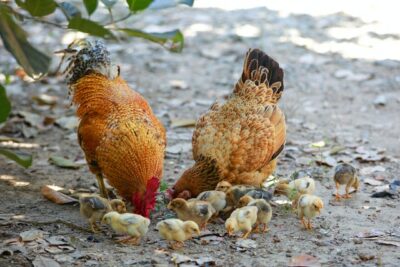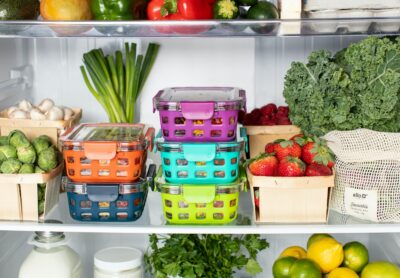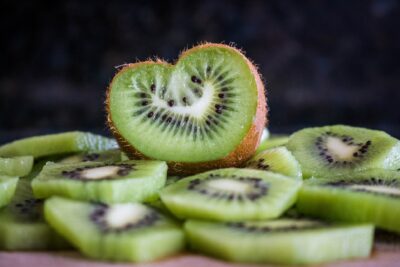Chicken is the most consumed meat in the world, and that means billions of animals are intensively farmed and slaughtered every year. But what do we know about how they are kept, and how that industrial system impacts the world around us?
What Are Chicken Farmed For?
There are two main reasons that chickens are farmed: for their eggs or their bodies (the meat), and the industry has bred two distinct types of birds to maximise production and profitability.
Egg-Laying Chickens
These birds have been deliberately bred over many generations to lay as many eggs as possible while consuming as little feed as possible. That way, profits are maximised. It matters little to the industry how much the birds suffer as a result of this genetic manipulation. Farmed chickens today lay around 300 eggs a year — they cannot help it, they have been deliberately bred to do so — but this comes at a huge expense to their wellbeing. All the shells of those 300 eggs require calcium, and the birds do not get sufficient in their diet to cover these needs. So, their bodies take the calcium from their bones, leaving them brittle, and more likely to break.
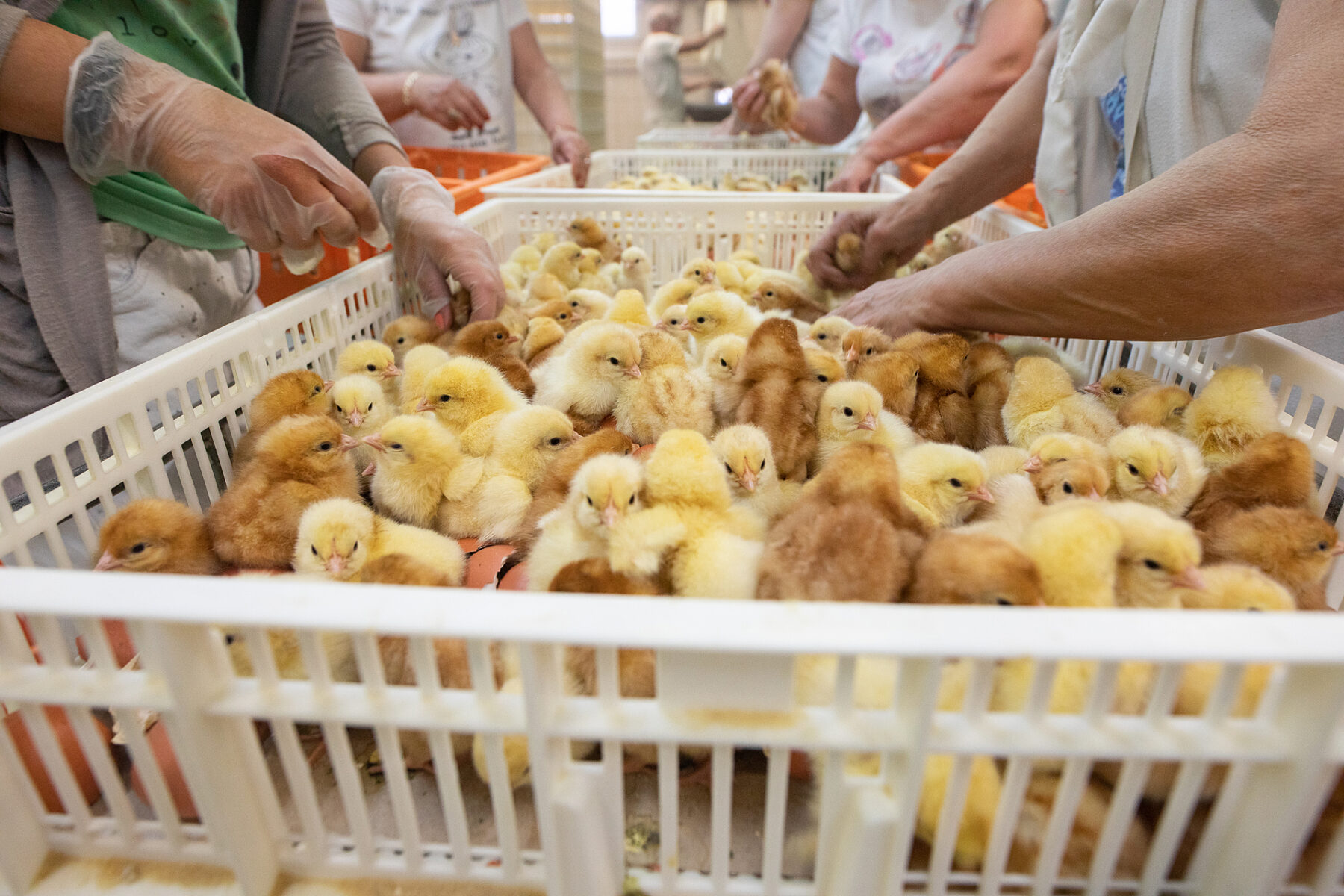
Because only females lay eggs, all the male chicks hatched into this industry are considered financially worthless and most are killed on their first day of life — gassed to death in the UK, or ground up alive elsewhere. As for the egg-laying hens themselves, when their productivity starts to decline, they too are slaughtered. There is no happy retirement for chickens, and this is one of the reasons why vegetarians often become vegan. After all, if you have already changed your diet to protect animals, it’s very hard to keep funding the egg and dairy industries.
Meat Chickens
Also known as “broiler” chickens, these are birds who have been deliberately bred to put on as much weight as possible as fast as possible, because more meat in a short time = more profit. Again, this has severe consequences for the animals themselves.
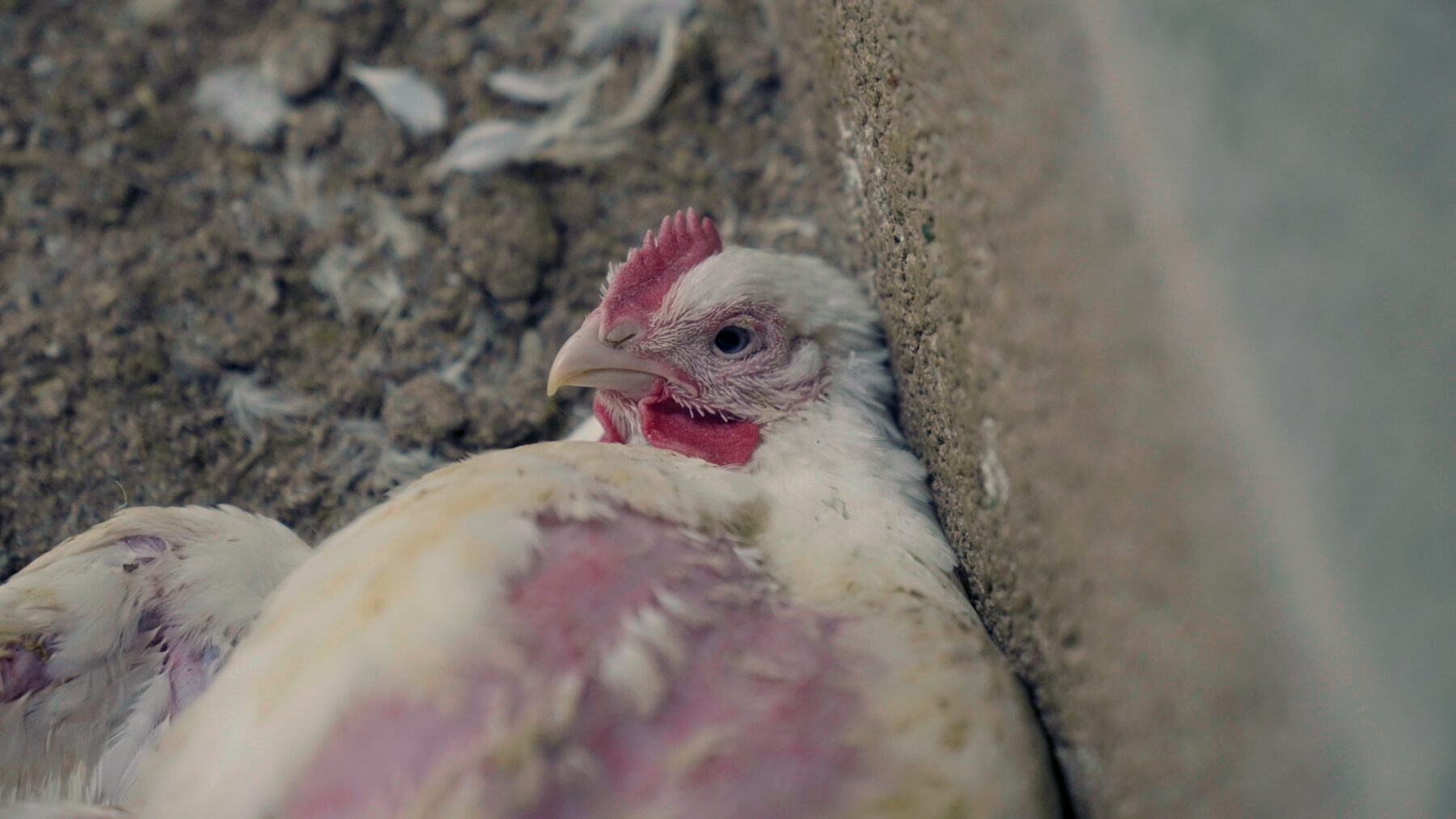
Today’s birds are engineered to reach adult size within just four to six weeks. They are still chicks but they are trapped inside a ballooning body. Such rapid growth puts a significant burden onto their joints and hearts. Even in such young birds, heart failure is all too common, while many birds suffer painful lameness, dislocated joints, and broken bones.
What Are The Types Of Chicken Farm?
There are roughly two types of farm: those that attempt to give the birds a little more space, and something closer to a natural existence, and those that favour the cram-them-in-sell-them-even-cheaper approach. Neither are good for chickens, and humane-washing in this industry is all too common.
Intensive Chicken Farm
Almost every bird in the UK is reared inside an intensive farm, also known as a factory farm. Here, the birds are given the bare minimum, just to keep them alive long enough to take their eggs or get them to slaughter weight. It is a pitiless system of farming, where animals are treated as things instead of beings.
Take a look at what happened when we went to visit a typical British chicken farm…
Extensive Chicken Farm
A small percentage of farmed birds are raised in extensive or higher welfare farms. The quality of these can vary, but almost universally, their marketing sounds a whole lot better than reality.
“Free range” birds can be kept crammed in factory farms, for example, and only let out when the weather is good or when there is no bird flu in the region. Unfortunately, there is a lot of bird flu, meaning hundreds of thousands of “free range” birds never even see the outdoors.
What Are The Chicken-Farming Methods?
There are different methods of farming chickens, none of them have the birds’ best interests at heart.
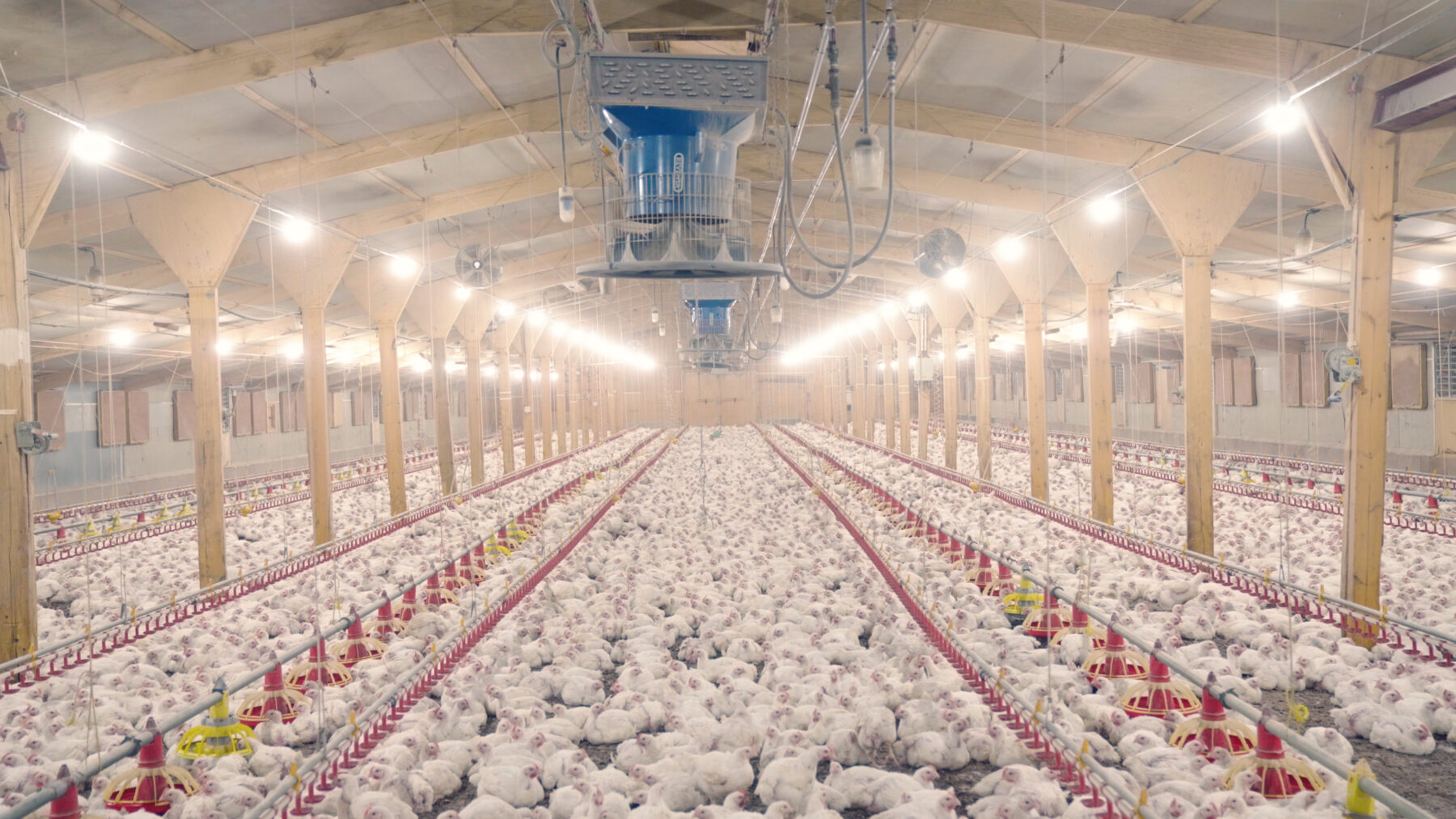
Industry Standard
The most usual way to farm meat chickens is to cram tens of thousands inside a single shed, clear out the dead each day, and send the survivors to slaughter when they reach 42 days. The birds are not given anything to do, no enrichment, no access to the outdoors. They will never feel the sun on their backs or the earth beneath their feet. Vast numbers die in these sheds every day, unable to survive the harsh conditions even for just a few weeks.
Free-Range
There are free-range farms for both meat and egg-laying birds, but they can look very similar to intensive farms. Thousands of birds may be crammed inside a vast warehouse-style hangar and be given “pop-holes” to the outside world. Birds are very territorial (hence the phrase “pecking order”) and birds who are further down the hierarchy may never cross the territories of stronger birds to get outside. Even if they could, they may find nothing but a patch of dirt. It’s not exactly how we like to think of free-range birds.
Barn Reared
Egg-laying hens may be “barn-reared” which sounds rather lovely, but in fact, just means they are crammed into a barn instead of being in a cage. There may be nothing for them to do, nowhere for them to go. Chickens like to find somewhere private and safe to lay their eggs, but in these conditions, they are denied this, and many of their other natural behaviours, too. The mortality rate in barn-reared birds is even higher than for caged birds, showing just how pitiless this system is.
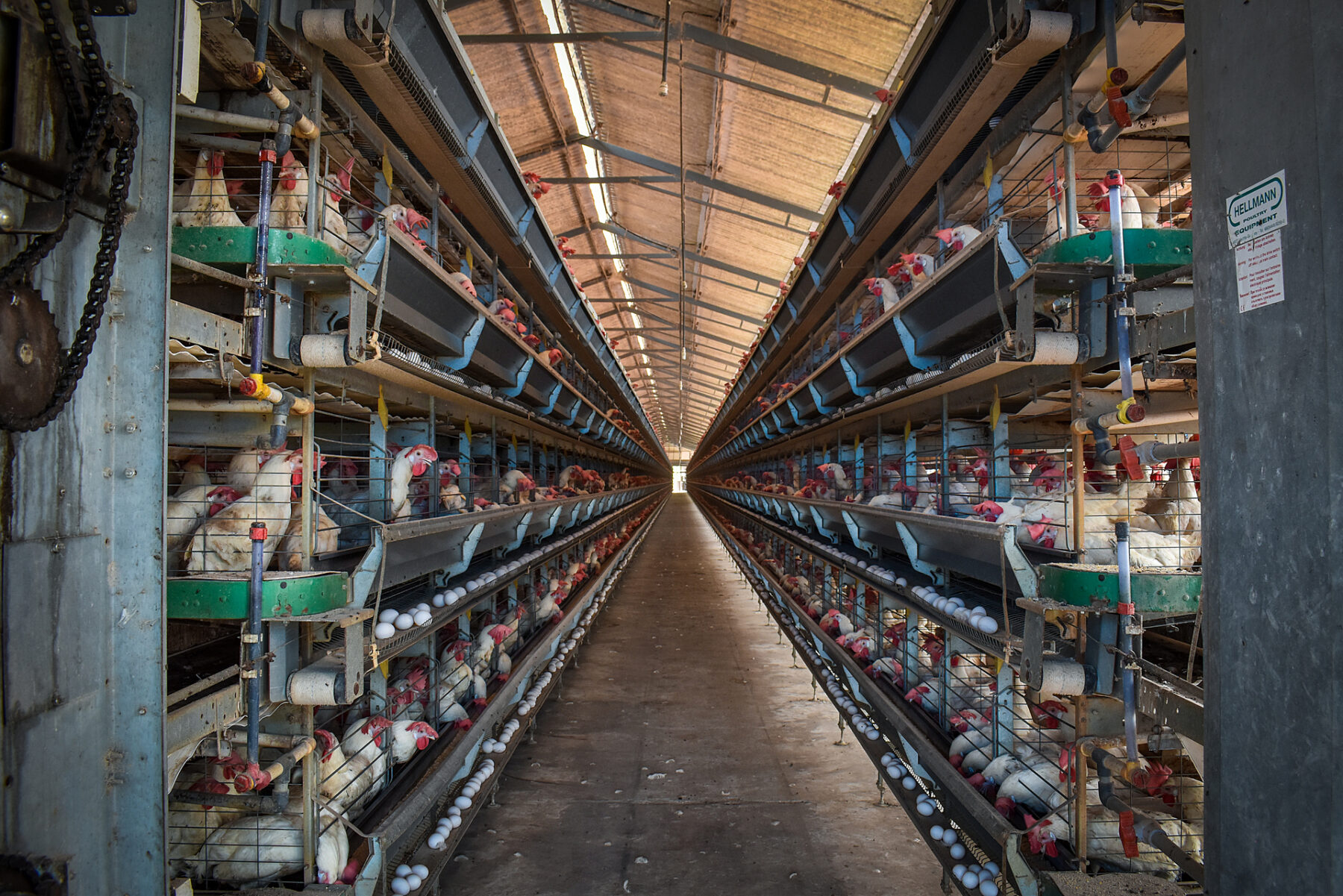
Battery Cage
Egg-laying hens are routinely incarcerated inside battery cages for the whole of their lives. In them, there is no space to even stretch a wing, let alone walk anywhere. For these inquisitive and active birds, it is an utterly inhumane and indefensible system. The wire mesh damages their feet, and the birds take out their frustrations on one another, which means injury is rife. The UK and European Union banned battery cages in 2012. It seemed like a huge step forward until the industry lobbied hard — and successfully — to keep caging birds. It was a shocking failure of the duty of care towards these animals.
Enriched Cage
This is what replaced the battery cage, and it is also known as a “colony cage” or a “furnished cage”. In them, 20 or so birds are kept together. They may have a piece of wood to stand on, a piece of plastic mat to scratch on, and a plastic curtain to go behind, but that is it. It is still a cage that thwarts their every instinct, and keeps their lives utterly miserable. They deserve so much better.
What Is The World Chicken Population?
Around 33 billion. And every one of those birds requires feed, which uses a disproportionate amount of land compared to the calories produced. This fundamental unsustainability is driving the loss of forests and wildlife. Billions of chickens also produce a vast amount of poop, which creates severe air and water pollution. When we harm chickens, we harm our planet, too.
Is Battery Chicken Farming Illegal?
It is illegal to keep chickens inside battery cages in the UK and EU, but not elsewhere. And in those countries, the birds are just crammed into different cages. It’s hard to see this as a significant step forward.
Why Is Chicken-Farming Bad?
Chicken farming is bad news for chickens, for the climate, for our waterways, for land use, for sustainability, for our health, and for global health. It’s hard to find any positives at all.
Antibiotics
The overcrowded, stressful conditions on typical farms mean chickens are more susceptible to injury and illness. To prevent financial losses, the industry uses antibiotics just to try to keep the birds alive, but this has a direct and very serious knock-on effect for humans. Globally, around 70 per cent of all antibiotics are used in farmed animals, and this reckless overuse means superbugs emerge which can — and do — kill people: more than one million a year already die from antibiotic-resistant pathogens.
Arsenic
Arsenic is highly toxic to people and is linked to cancer of the skin, bladder, and lungs. Despite this, in the United States and elsewhere arsenic is added to chicken feed because it promotes growth, kills the parasites that cause diarrhoea, and enhances the colour of chickens’ meat. Incredibly, an estimated 70 per cent of the chickens farmed in the US are still fed arsenic.
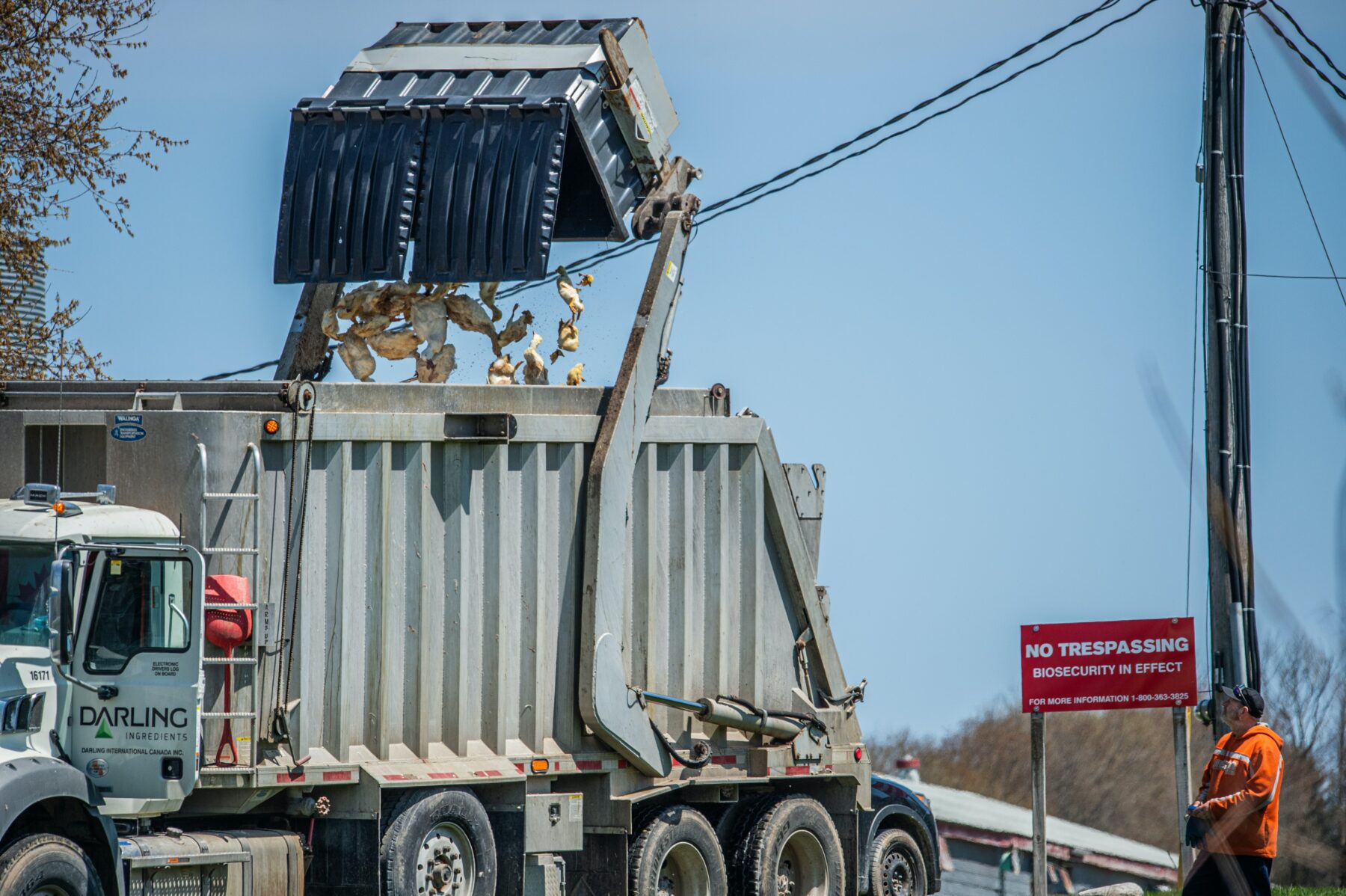
Avian Influenza
There are several strains or bird flu viruses, the most serious being H5 and H7. These can cause mild or severe illness in the sick and stressed birds, but they can also transmit to people. Already, many different bird flu strains are circulating, and some have the ability to cause another global pandemic. Another one? Yes, this has happened before. The 1918 avian flu pandemic was the most serious to date, with more than 50 million people dying. Pandemic experts say it is just a matter of time before the next pandemic comes. And when it does, it could be because we ignored the warnings and continued to factory farm chickens.
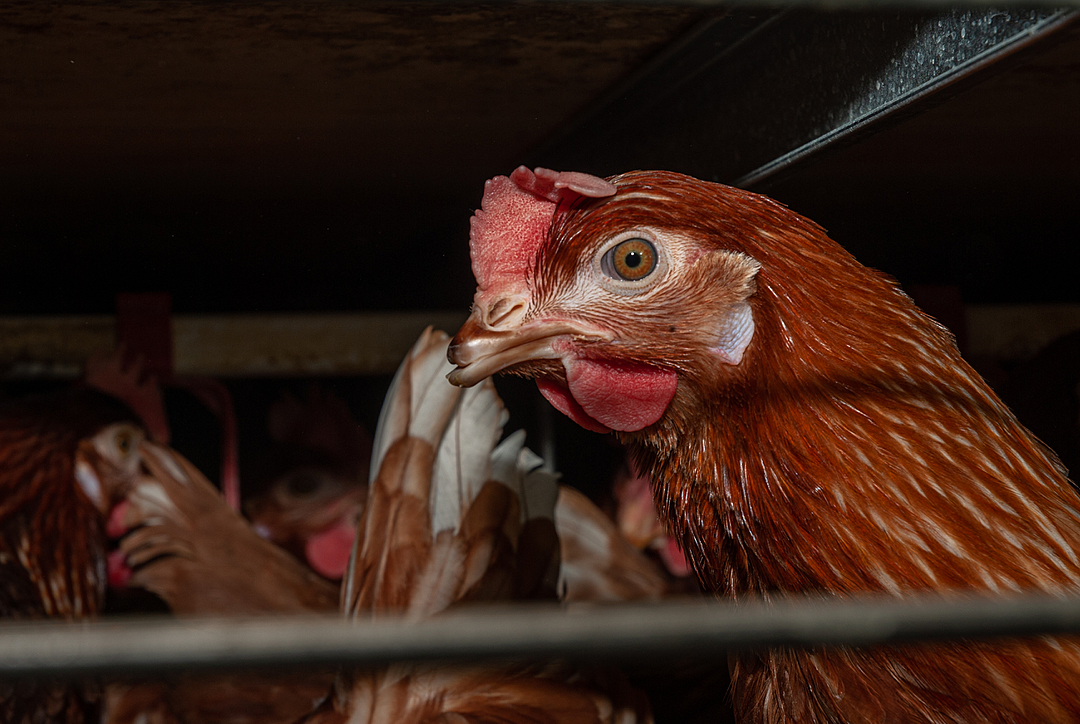
Beak Trimming
This may sound more benign than it really is. This is where the ends of the birds’ beaks are cut off with a red-hot blade. Beaks are incredibly sensitive and this procedure can cause severe and chronic pain. Despite this, it is a common and legal mutilation carried out because the birds get stressed and harm each other, and “trimming” is intended to mitigate the damage done. Of course, if the birds weren’t kept in appalling conditions, they wouldn’t take their frustrations out on one another.
Campylobacter
Campylobacter is endemic in British chicken farms. The bacteria are carried in the birds’ intestines, livers, and other organs, and contaminate their flesh during the slaughter process. Campylobacter is the most common bacterial cause of food poisoning in Britain, and chicken is the most common source.
Dermatitis
Gangrenous dermatitis affects both chickens and turkeys. It is usually caused by the Clostridium bacteria, and causes severe skin lesions, lung disorders, internal bleeding, and death. It is a horrific way to die, but no treatment is given to the birds. The cost of a vet visit is simply worth more than the birds are considered to be worth, and farming is a profit-driven business. Dermatitis is one reason why the mortality rate in chicken farms is so high.
E coli
E. coli bacteria are found in farmed chickens worldwide. In birds, this can cause infection under the skin, as well as respiratory disease, septicaemia, and death. The bacteria can also pass to people, making them sick, too. Research by George Washington University, for example, examined fresh poultry products and discovered in them the kinds of E.coli that could cause bladder infections and other serious conditions in people. This type of bacteria takes thousands of human lives every year.
Efficiency
Producing meat, including chicken, is fundamentally unsustainable. It takes far more land and water to produce meat than to produce plant-based foods, and it produces more climate destroying emissions. At VFC, we had our products independently audited to compare their impact against fried chicken from chickens. Guess what? The vegan version came out on top in every single environmental metric.
Humane Treatment
There is no individual treatment or care for chickens. Their lives are worth so little that it is expected that millions will suffer to death, and these losses are built into the farm’s business plan. Farmed chickens never know a moment’s kindness or compassion, as their lives and bodies are only considered in terms of how they can best be monetised. If this leaves a bad taste in your mouth, you are not alone.
Mortality
The number of birds who die in each farm varies, but the average loss is around four to six per cent of all birds. Given billions are farmed and slaughtered each year, that is millions of animals who suffer with injury and illness, but are never afforded the care they need, or even any pain relief. Their deaths are just not important to the industry.
Predation
In free-range flocks, predation can be a real problem. Whenever you bring together large numbers of small animals, they will be vulnerable to predators. People who keep backyard birds often fail to properly secure them, and countless animals are killed.
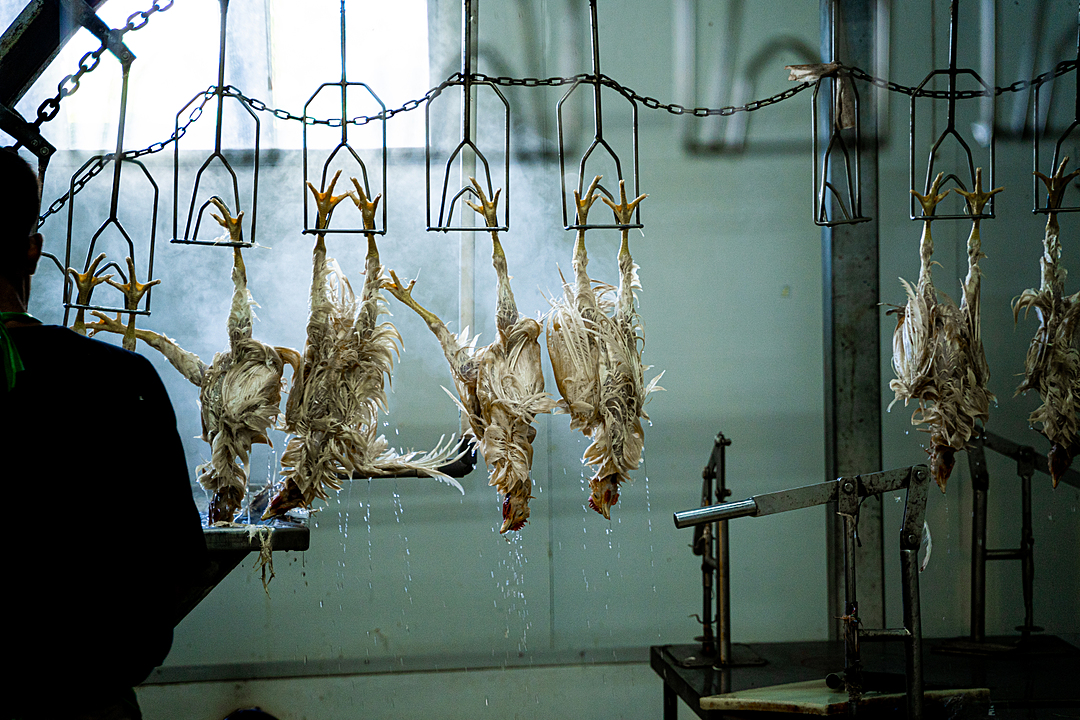
Slaughter
There are two methods of slaughtering chickens, both of them horrific. Conscious birds are hung upside down, shackled by their legs, and dragged through electrified water, which is intended to render them unconscious. It doesn’t always work, but whether it does or not, the slaughter line moves on and the birds’ throats are cut. Increasingly, though, chickens are being sent into gas chambers which asphyxiate the birds to death.
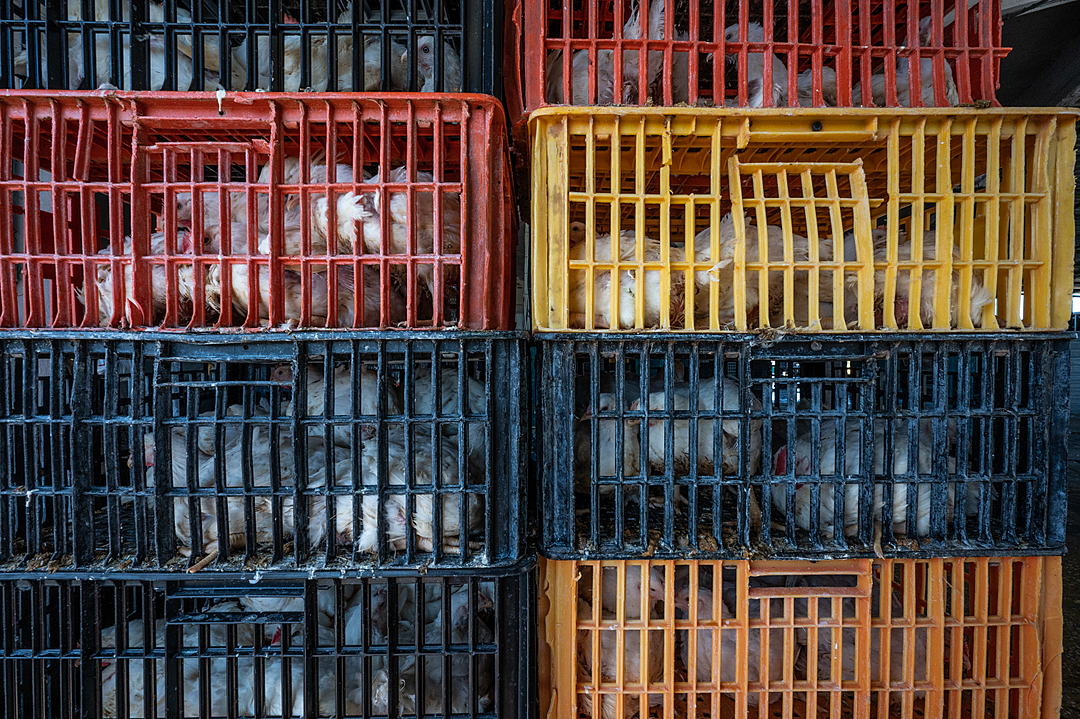
Transport
The first and only time that the birds leave their sheds is when they are packed tightly into crates, loaded onto a truck, and transported to the slaughterhouse. This happens in all weathers — in searing heat, pouring rain, and freezing cold. The journey can take many hours but there is no rest, no feeding, no water, just fear and discomfort, and animals succumbing along the way.
Waste Management, Manure
Billions of chickens create a lot of poop, which is toxic and causes significant environmental destruction. When it gets into waterways, which it inevitably does, it feeds algal blooms, which deprive water of oxygen and kill wildlife. Just take a look at the river Wye to see the eco vandalism caused by chicken farms.
Worker Health And Safety
Factory farms are not safe places for people either. The particulate matter and ammonia created there can cause respiratory problems in workers, as well as in people who live nearby. As for the slaughter industry, workers are vulnerable to injury and death, but many also experience mental health traumas. Alcohol and drug use, PTSD, and other disorders are all too common in slaughterhouse workers. But what can we expect when we ask others to slit the throats of animals every day?
Conclusion
When we buy a piece of chicken that came from an animal, there are serious repercussions. We may not see the suffering, the environmental destruction, or the human costs, but they are all there, factored into the system. But factory farming only continues because consumers fund it. We can dismantle it today, simply by not buying these damaging products. That doesn’t mean we lose out on the flavours we love. Companies like VFC are producing delicious vegan fried chick*n, which brings all the pleasure and none of the pain.

